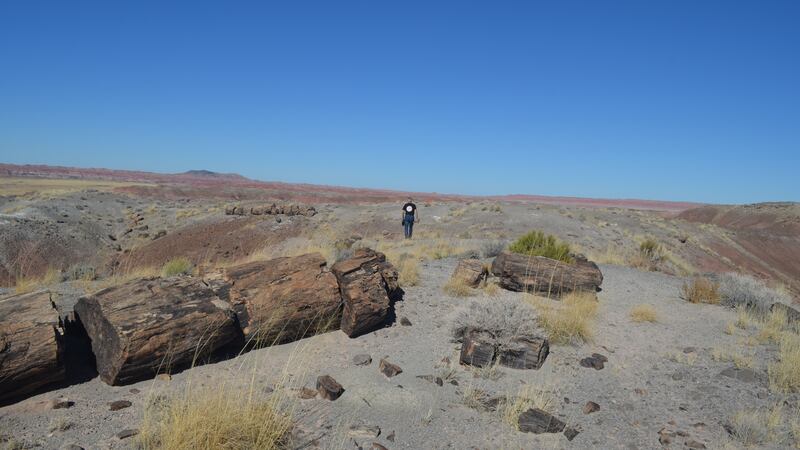Traces of human-induced global warming dating back as far as 1900 have been detected by scientists.
The global warming fingerprints can be seen in patterns of drought and rainfall across the world, it is claimed.
Among the observations, researchers documented drying of soils across much of North and Central America, Eurasia and the Mediterranean.
Other regions, including the Indian subcontinent, had become wetter over the past century.
The study suggests that changes linked to global warming caused by human activity may have been going on longer than previously thought.
Researchers looked at soil moisture, a more subtle measure than rainfall, by examining tree rings up to 900 years old.
The aim was to pick out patterns matching those predicted by computer models amid the “noise” of natural weather variations.
Study co-author Dr Benjamin Cook, from the Nasa Goddard Institute for Space Studies and Columbia University, said: “We asked, does the real world look like what the models tell us to expect?
“The answer is yes. The big thing we learned is that climate change started affecting global patterns of drought in the early 20th century.
“We expect this pattern to keep emerging as climate change continues.”
Colleague Dr Kate Marvel, a climate modeller at Goddard and Columbia, said, “It’s mind boggling. There is a really clear signal of the effects of human greenhouse gases on the hydroclimate.”
The global warming fingerprint was most obvious between 1900 and 1949, said the scientists writing in the journal Nature.
From 1950 to 1975, the pattern scattered into seemingly random events – possibly due to enormous amounts of industrial aerosols pouring into the atmosphere without pollution controls.
The effect may have been to mask the impact of greenhouse gases, even though their levels continued to rise, said the scientists.
Then starting in the 1970s, many industrial countries began to introduce progressively stricter clean-air laws. At the same time, greenhouse gas emissions spiralled upwards.
As a result, the global warming signature became more visible again in the early 1980s.
The signal is still in the process of strengthening, the researchers point out.
Dr Marvel said: “If we don’t see it coming in stronger in, say, the next 10 years, we might have to wonder whether we are right. But all the models are projecting that you should see unprecedented drying soon, in a lot of places.”
Many centres of agricultural production could become permanently arid, especially in North America and Eurasia, the scientists warned.
The Mediterranean was expected to be hit by a ‘double whammy’ of both less rainfall and more heat-driven evaporation drying out the soil.
While India was likely to get more rain, it could occur in overwhelming storms and not necessarily at the right time, said the team.








